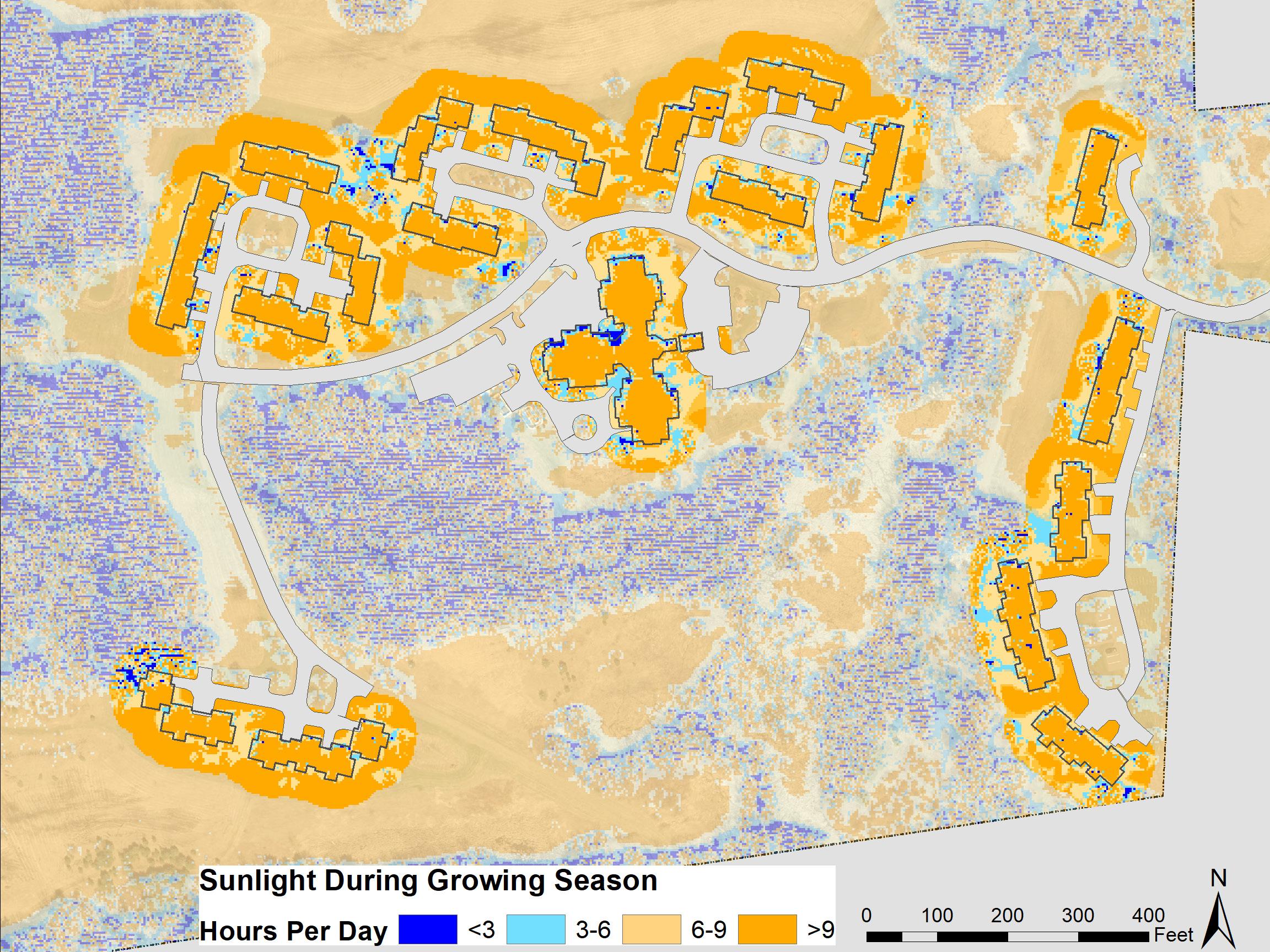Key Elements • Cranberry Field features a raised overlook into the meadow. • Vegetated swale along Bassett Brook Drive. • One outdoor gathering space, behind the Inn. • Huckleberry’s hillside and Wide Woods Trail entrance become pollinator meadows. • Common lawn and front yards are planted with stone and rock mulch, evergreen shrubs, and groundcover. • Rose Field includes a boardwalk to the nearby vernal pool, a native botanical walk around the perimeter of the field, and a gathering space and shade trees at the center of the field. • North Field, Mid-Woods, and Mulberry Meadows are partially reforested along edges; Florence Road meadow becomes a “flagship” intensively managed pollinator meadow.
Assets • High carbon sequestration potential. • Longest and most diverse forest edge of alternatives, creating high wildlife habitat value. • Greatest number of outdoor gathering spaces. Constraints • Slowest time to establish the plant palette. • May reduce valued views out to meadows. • Two-thirds of gathering spaces may be too far away for Inn residents
Assets • Highest food production potential. • Increases food sources for pollinators and other wildlife in addition to humans. Constraints • Most diverse and intensive management regimens. • Landscape may be too ephemeral to provide year-round color and visual appeal. • Rotational grazing and farms may require an independent farmer.
Assets • High pollinator habitat value. • Maintains all views out and potentially enhances views. • Incorporates more educational elements. Constraints • Fewest number of gathering spaces. • Boardwalk will need NOI and may be expensive to install. • Front yard landscapes initially very expensive to install.
Spring 2020
Key Elements • Pollinator plant border along Cranberry Field. • Vegetated swale along Bassett Brook Drive. • Two outdoor gathering spaces. • Huckleberry’s hillside converted to an orchard. • Common lawn and front yards planted with native shrubs and potentially edible landscaping such as fruit trees and berry bushes. • Rose Field becomes a one-acre farm planted on contour. • Mid-woods meadow and Mulberry Meadow are managed with rotational grazing, the Florence Road meadow becomes an orchard, North Field becomes an intensively managed pollinator meadow.
Eli Bloch and Allison Mason
Key Elements • Increased forest edge to buffer NW winter winds across Cranberry Meadow. • Cranberry Meadow has a border of deciduous shade trees with 50+ foot spacing. • Three outdoor gathering spaces. • Vegetated swale along Bassett Brook Drive. • Common lawn and front yards are planted with a layered forest pattern. • Rose Field forest edge has an outdoor Quaker meeting space and an expanded community garden. • Forest edge is extended into most meadows. Some meadows are fully or partially allowed to return to forest, and deliberate reforestation occurs around the vernal pool in Mulberry Meadow.
Preliminary Concepts
Lawns to Lupines
Northampton and Easthampton, Massachusetts
Foodscapes
DESIGN ALTERNATIVES THE CONWAY SCHOOL
The Overstory
Lathrop Retirement Community Landscape Master Plan
Design Alternatives
12
Not for construction. Part of a student project and not based on a legal survey.
















